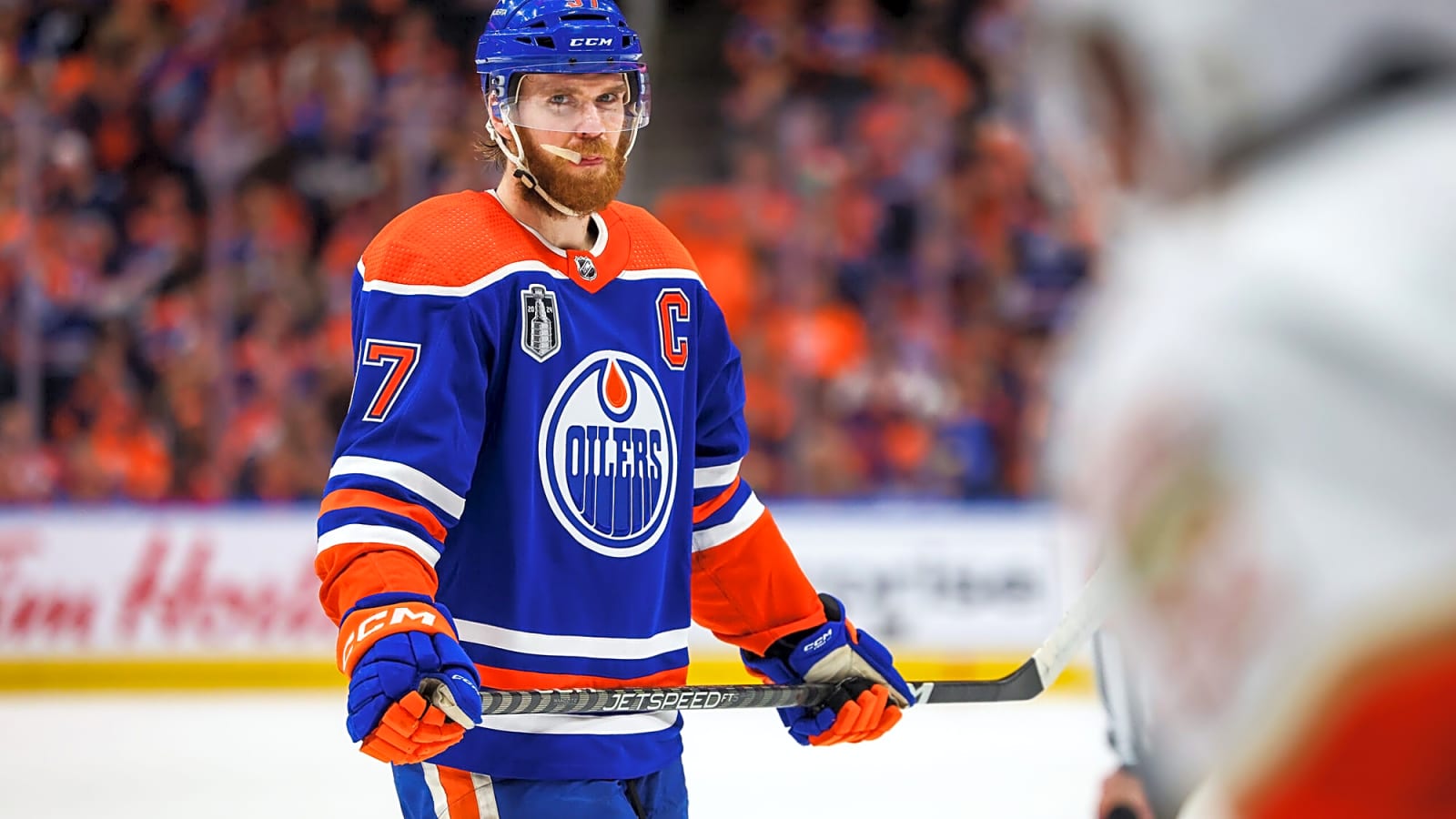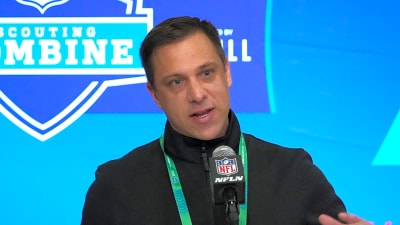
The relationship between Connor McDavid and the Edmonton Oilers is much stronger than some want you to believe. You’ve likely read or heard numerous claims as to why he might leave. He isn’t leaving. An extension was always happening, and the only uncertainty is what the AAV and term of his new deal will be.
Will McDavid and the Oilers get creative?
For over a year, I’ve written that the Oilers and McDavid will sign an extension, and it would be the $16m range. He could sign for eight years, but I sense it might be closer to four — which is fine, but what if the Oilers and his camp decide to get creative?
The Oilers want to win, and in a salary cap world every dollar matters. Let’s assume McDavid is going to sign for four years around a $16m AAV. I spoke with Kyle Stich from AFP analytics on Tuesday and their projection had McDavid at $16.4m, because it was the same percentage of the cap as his current $12.5m AAV that was signed in the summer of 2017.
Instead of that, what if McDavid signs a one-year extension this August with a $14.6m AAV? This contract would be for the 2026-27 season. The salary cap that season will be $104m, while in 2027-28 it jumps up to $113m.
And then in January of 2027 (because when you sign a one-year extension you can’t sign a new deal until January of the year of the contract), McDavid signs a three-year extension at $17m AAV.
Why do this?
Because in 2026-27 the cap is $104m, while it jumps up to $113m the following year and will likely keep climbing. By signing the one-year deal when the cap is $9m lower, it gives the Oilers, and McDavid, more cap space to fill out the roster. At $14m he is still the highest paid Oiler, and likely highest paid in the NHL, and then when he signs the three-year extension, his total money earned over the four years is $65.6m, which would average $16.4m over the four seasons.
I haven’t seen an elite player do this, however, as Kevin Labanc did this with the San Jose Sharks. Labanc isn’t close to McDavid in terms of skill, but after scoring 56 points in 2019, he signed a one-year deal at $1m with the Sharks. Then the following summer he signed a four-year deal at $4.725m. Labanc only had 33 points in 2020, but he still got $4.725m. He averaged $3.98m over the five years, but in 2020, when the Sharks had no cap space, Labanc and his agent helped out the Sharks.
There is nothing illegal about it, at least not in the existing CBA or new CBA. It’s like the current LTIR rule. It didn’t look great when teams activated a player with a $9.5m AAV just in time for the playoffs, where there was no salary cap, but it was allowed. And right now, there is nothing stopping the Oilers and McDavid from signing a one-year deal, and then signing a three-year extension in January of 2027.
In 2026-27 McDavid’s salary ($14.6m) would eat up 14% of the cap (when he signed in 2017 it was 16.6%).
Then in 2027-28 McDavid’s $17m cap hit would be 15% of the cap, and then it would drop each year as the cap increased.
I understand some will scoff at the idea, mainly because it isn’t the norm and it only saves $1.5m to $1.8m depending on what he actually signs for. But the margin of victory is very thin in the playoffs, and having more cap space, if you use it properly, can be a significant advantage.
The other reason I like it is because it would quiet the mindless and always incorrect claims that McDavid isn’t happy. He could stand up and say, “I signed a one-year deal to give us more cap flexibility.”
The NHL and most organizations don’t have a history of trying new approaches or doing things differently, and while the cap savings aren’t massive, I still see value in considering it before the cap jumps up to $113m in 2027/2028.
OTHER PROJECTIONS…
Like McDavid, Mattias Ekholm, Jake Walman and Brett Kulak are entering the final year of their contracts and all could be UFAs next summer.
AFP has Ekholm signing a two-year deal with a $6.5m AAV. I was a bit surprised at that number. The term makes sense, but Ekholm will be 36 when his new deal kicks in. Will he still be playing top-pair minutes? I thought he’d be closer to $6m, maybe even $5.75m.
AFP projected Jake Walman to sign a five-year deal at $6.5m. Walman had a very good playoffs for the Oilers. He was solid in San Jose prior to the trade as well, however, with Ekholm healthy Walman won’t play as many minutes and likely will produce less offence. I could see them looking for a lower AAV than $6.5m. Also, the challenge for the Oilers is by paying Ekholm and Walman close to $6m each — that gives them three left-shot D-men, along with Darnell Nurse, getting top-four money. And unless Walman plays the right side, one of them will be in the third pair and not playing over 18 minutes. It gives them a built-in transition as Ekholm ages, and that is good, but if they sign both of them, it virtually guarantees Brett Kulak won’t be coming back, unless one of the other three is dealt.
AFP projected Kulak at $3.9m AAV for three years. I don’t see how they have room long-term for Nurse, Ekholm, Walman and Kulak. They need to have room to acquire a natural right-shot, second-pair defender. It will be interesting to see who GM Stan Bowman opts to move or not re-sign to create room for a 2RD.
I also asked about Vasily Podkolzin, who is a pending restricted RFA. AFP projected him with a two-year, $2.3-$2.4m AAV similar to Maxim Tsyplakov who signed earlier this summer with the Islanders. Podkolzin proved he is an effective forechecker and reliable defensively, but he didn’t add much offence in the regular season. However, he produced more in the playoffs, and with the Oilers’ new skills coach, Conor Allen, and their approach to more skill enhancement practices, Podkolzin is a prime candidate to produce more offensively. Signing him this summer, 14 months before his extension kicks in, gives them a good chance of him being a value contract.
More must-reads:
- Sidney Crosby breaks longtime Penguins franchise record
- Three underperforming NHL players who must step up
- The 'NFL's active 300-yard passers' quiz
Customize Your Newsletter
 +
+
Get the latest news and rumors, customized to your favorite sports and teams. Emailed daily. Always free!








